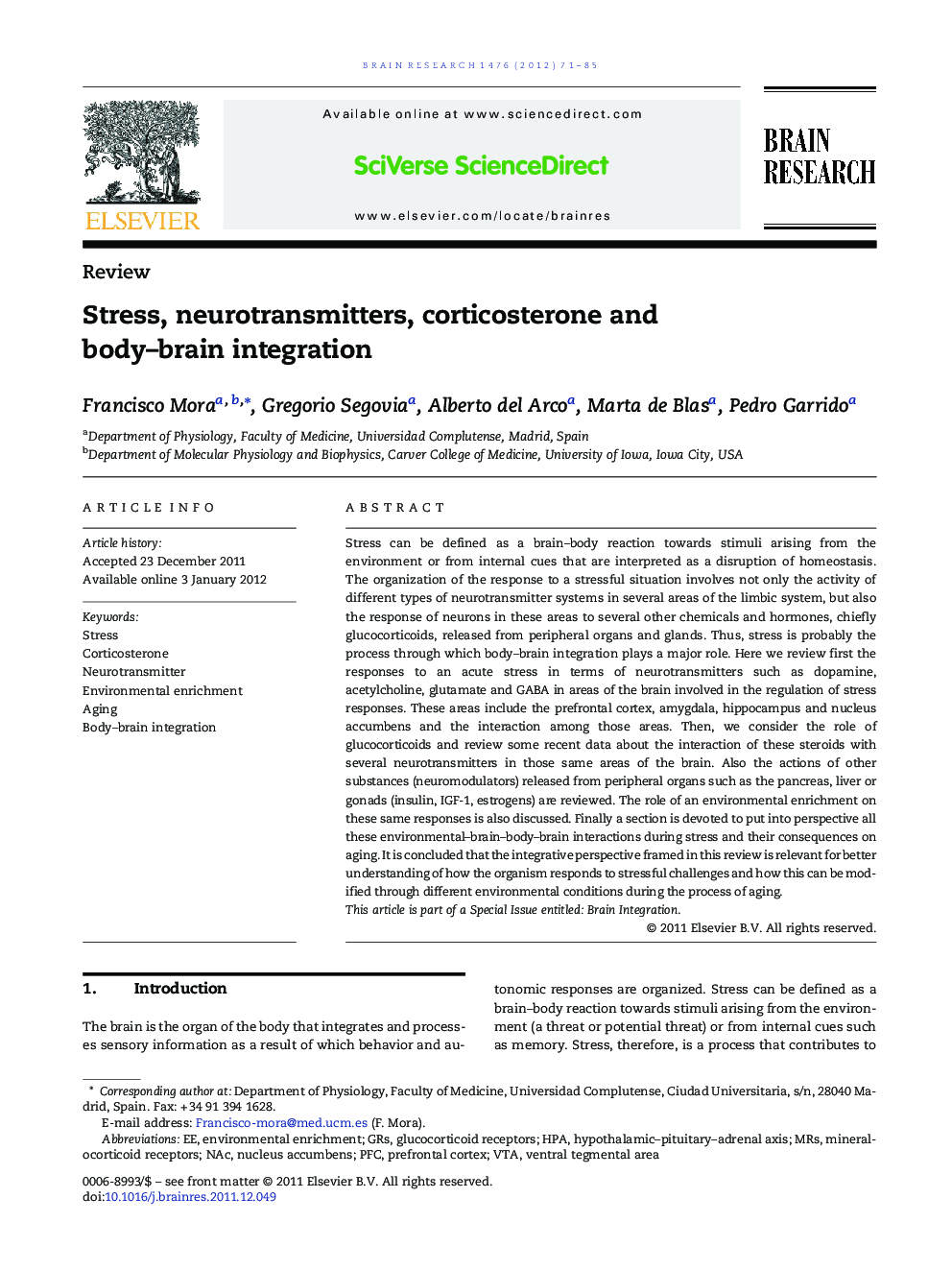| Article ID | Journal | Published Year | Pages | File Type |
|---|---|---|---|---|
| 4325057 | Brain Research | 2012 | 15 Pages |
Stress can be defined as a brain–body reaction towards stimuli arising from the environment or from internal cues that are interpreted as a disruption of homeostasis. The organization of the response to a stressful situation involves not only the activity of different types of neurotransmitter systems in several areas of the limbic system, but also the response of neurons in these areas to several other chemicals and hormones, chiefly glucocorticoids, released from peripheral organs and glands. Thus, stress is probably the process through which body–brain integration plays a major role. Here we review first the responses to an acute stress in terms of neurotransmitters such as dopamine, acetylcholine, glutamate and GABA in areas of the brain involved in the regulation of stress responses. These areas include the prefrontal cortex, amygdala, hippocampus and nucleus accumbens and the interaction among those areas. Then, we consider the role of glucocorticoids and review some recent data about the interaction of these steroids with several neurotransmitters in those same areas of the brain. Also the actions of other substances (neuromodulators) released from peripheral organs such as the pancreas, liver or gonads (insulin, IGF-1, estrogens) are reviewed. The role of an environmental enrichment on these same responses is also discussed. Finally a section is devoted to put into perspective all these environmental–brain–body–brain interactions during stress and their consequences on aging. It is concluded that the integrative perspective framed in this review is relevant for better understanding of how the organism responds to stressful challenges and how this can be modified through different environmental conditions during the process of aging.This article is part of a Special Issue entitled: Brain Integration.
►Stress probably represents the best example for a body–brain integration of functions. ►Stress involves both, interaction of brain neurotransmitters and modulation by peripheral factors. ►Resilience probably arises as a result of changes in the body–brain integration. ►Elevated basal glucocorticoids could be responsible for the neuronal damage during aging.
